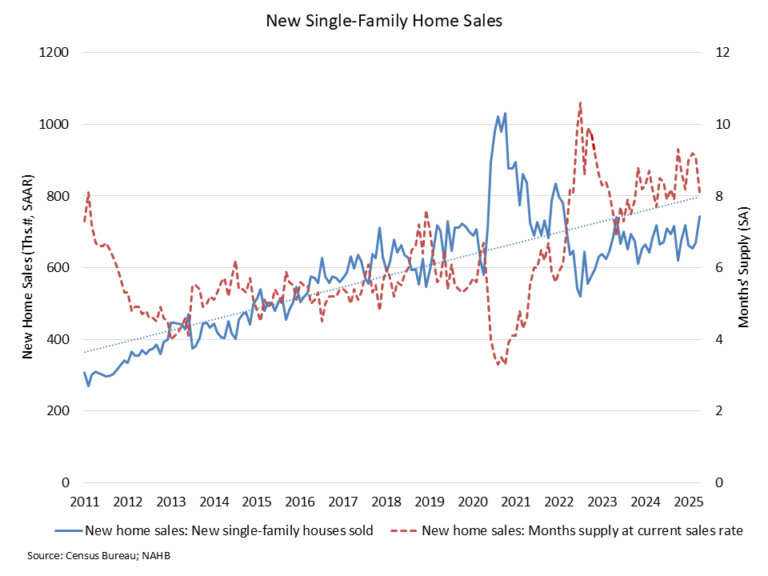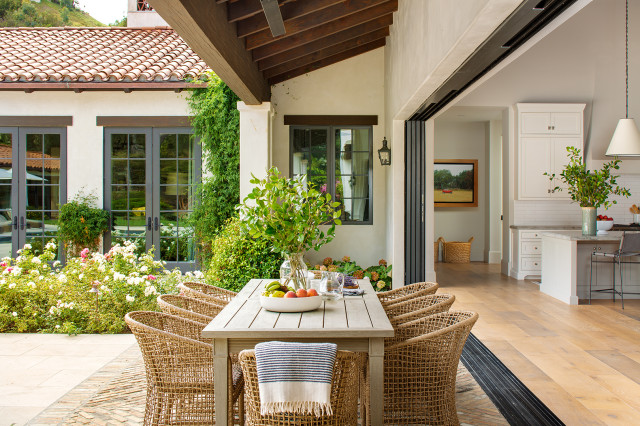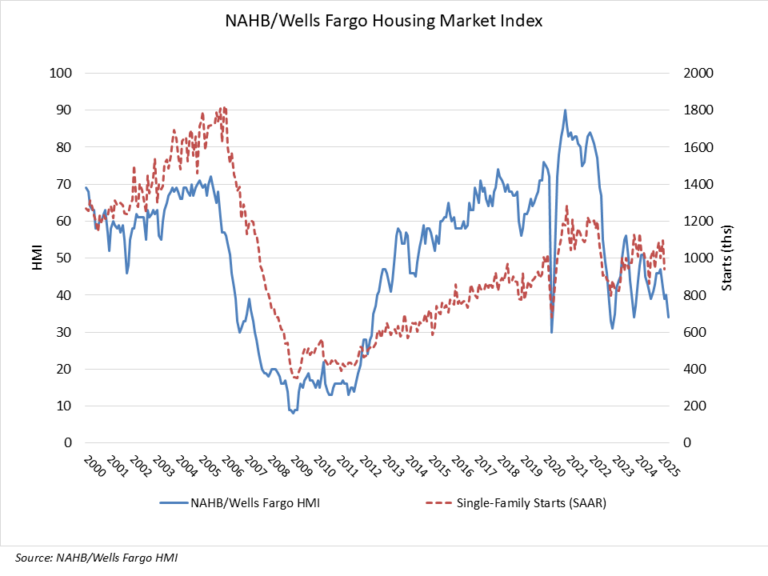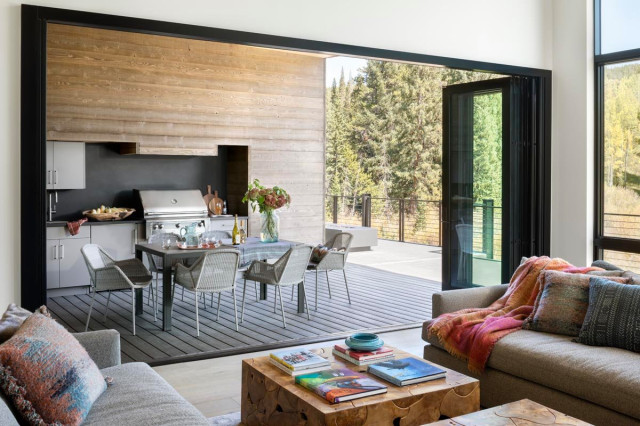The Census estimate of new home sales posted an unexpected gain in April even as builders and consumers continue to deal with economic uncertainty, elevated interest rates and rising building material costs.
Sales of newly built, single-family homes in April increased 10.9% to a 743,000 seasonally adjusted annual rate from a downwardly revised March number, according to newly released data from the U.S. Department of Housing and Urban Development and the U.S. Census Bureau. The pace of new home sales in April was up 3.3% compared to a year earlier.
The April new home sales figure may be revised as it runs counter to market commentary and the fact that builder sentiment moved markedly lower in May. A less volatile look at the market would be the year-to-date figures, which show new home sales are down 1.2% thus far in 2025 on elevated interest rates, ongoing policy uncertainty and rising construction costs.
Rising inventory in the resale market is likely to place pressure on both pricing and sales activity for home builders during the second half of the year. The April new home data reflects this as new home inventory is leveling off near a half million of residences marketed for sale, up just 1.6% from January.
In April, new home inventory totaled 504,000 residences marketed for sale. While this is 8.6% higher than a year ago, it is only 1.6% higher from January. At the current sales pace, the months’ supply for new home stands at 8.1 compared to 7.7 a year ago.
To further illustrate the challenges builders are facing during the spring home buying season, 61% of home builders are using various kinds of sales incentives, including mortgage rate buydowns, to facilitate sales due to lackluster demand.
A new home sale occurs when a sales contract is signed, or a deposit is accepted. The home can be in any stage of construction: not yet started, under construction or completed. In addition to adjusting for seasonal effects, the April reading of 743,000 units is the number of homes that would sell if this pace continued for the next 12 months. This estimate may be revised lower next month.
Further, when accounting for existing, single-family home sales (a market which is showing rising inventory levels), total home inventory (new plus existing homes) is at a 4.8 months’ supply as of April. This is up from 4.6 from March and up from 4.1 from a year ago. The current reading is the highest since late 2015. Prior analysis indicates that the market will face notable inventory impacts on production as this measure approaches 5.5.
The median new home sale price in April was $407,200, compared to $415,300 a year ago.
Regionally, on a year-to-date basis, new home sales are down 32.5% in the Northeast, 14.8% in the Midwest and 2.4% in the West. Sales are up 5.7% in the South.
Discover more from Eye On Housing
Subscribe to get the latest posts sent to your email.
This article was originally published by a eyeonhousing.org . Read the Original article here. .














Adding a few plants to your yard is a great way to revitalize the space — and it doesn’t have to cost too much, says Wayne De Klijn, owner of AQL Landscape Design. When you’re choosing new plants, it’s important to pick a theme so the garden doesn’t look visually chaotic and disconnected, he says. De Klijn suggests choosing plants based on their region. “Or you might choose a theme based on color, such as all-white flowering plants,” he says.
It’s important to consider your region’s and backyard’s conditions when choosing plants. “The right plant in the right position will thrive,” Pezzimenti says. Soil preparation is also key. “Cultivate the soil before planting, and make sure it’s fluffy. This will give your new plants a great start,” he says.
The quality of plants you buy will also affect their success. “Be sure to purchase quality plants from a reputable nursery,” Pezzimenti says. “Check [that] the plant stock looks healthy and that roots are not pot-bound.” Prices for plants vary greatly; for an affordable option, purchase plants in seed form, cuttings, bulbs, tubes or small container sizes, he says.
Make Sure You Read This Before Buying New Plants